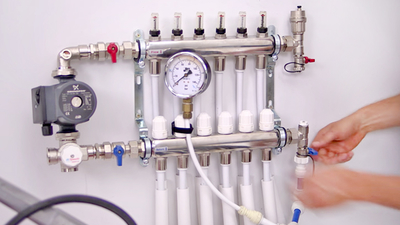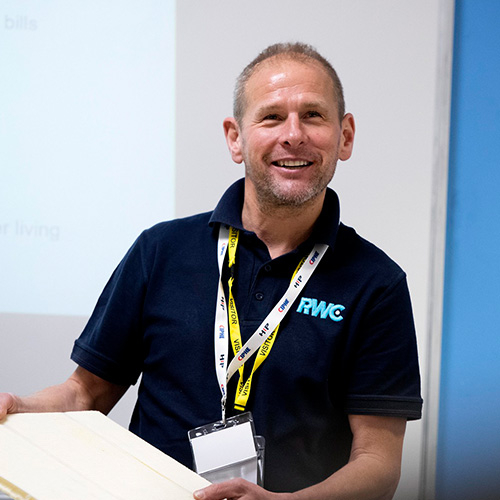Leak proof homes part 2: Underfloor heating

With news of the government banning the installation of gas boilers in new homes by 2025, installers and contractors need to find improved low-carbon alternatives to heat up homes. As a bid to reduce Britain’s carbon emissions, this ban aims to replace fossil fuel heating with renewable substitutes such as ground source and air source heat pumps.
As a result, the installation of underfloor heating (UFH) is becoming more and more commonplace in new builds and home renovations. In fact, according to Markets and Markets, the global underfloor heating market is estimated to grow from $4.6 billion in 2020 to USD $6.6 billion by 2025, at a CAGR of 7.3%.
This offers plumbers and plumbing and heating engineers a great revenue stream when it comes to installing UFH. With these projects likely to gain in popularity, here are five tips to follow to ensure UFH systems are leak-proof and ensure a smooth, trouble-free installation.
1. Use conduit pipes to prevent cracking and damage
The first area where cracks and damages could potentially happen if adequate protection is not used is where all the pipework comes up to meet the manifold.
It’s recommended to cover the pipes coming up to the manifold with conduit pipes, as they act as a protective sleeve, shielding pipes from accidental damage. The conduit also prevents excessive heat from building up in areas where pipes carrying hot water are close together, which can crack or damage the floor.
2. Performing under pressure – test the UFH system under pressure
After you’ve installed your UFH system, it is vital that you undertake a pressure test using water, rather than just air. You should perform a pressure test at six bar before any flooring or screed is laid. This gives you the opportunity to check for leaks and ensure the pipes reach maximum expansion. Specifically, with screed, maintaining the pressure until it has been fully laid and cured will also prevent it from cracking later.

3. Protect pipework from freezing and splitting
New build and renovation projects can take weeks, maybe even months to complete – it’s not uncommon to install UFH pipework and lay screed months before the property is ready to live in.
In most instances pipework in the screed is subject to sub-zero conditions while the rest of the project is being completed, the water in the pipes can freeze, which causes it to weaken and split. However, this cracked pipework may not be detected until the UFH heating is in use, and the house is being lived in by the homeowners, which can result in costly remedial work.
One way to avoid this is by adding antifreeze to the water in the pipework. Once the winter has passed, this water can be flushed out of the system and replaced.
4. Follow WRAS 2.7 guidance
Another way to prevent leaks from happening is to follow the guidance given under the WRAS 2.7 schedule.
First – safeguard UFH systems by reducing leak points, i.e. joints in the system. You can use long, continuous runs of pipe to achieve this. For instance, JG Speedfit Layflat pipe comes in various sizes and in coil lengths of up to 300m.
The schedule also advises pipe-in-pipe installations, as this can protect the pipe that carries the water. If a joint has to be made, then that joint should be accessible via a junction box in case an issue occurs.

5. Collaboration with manufacturers on UFH
When plumbing and heating engineers collaborate with manufacturers, they are able to complete jobs quickly and efficiently and adopt new technology and practices. As a result, they can offer new services that will help them retain new work in the future.
At JG Underfloor, we always advise you to liaise with manufacturers to scope out the projects and plan accordingly, especially with jobs such as underfloor heating. By doing so, projects can be streamlined, costly errors are prevented, and installation challenges can be foreseen and overcome in advance.
For more about underfloor heating tips, why not check out another of our UFH blogs here.
